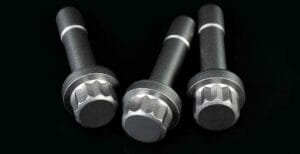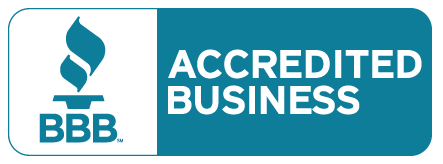Different Types of Coatings For Metal
 When it comes to manufacturing, achieving the perfect metal finish is essential. It enhances the aesthetic appeal of the product and provides durability and protection against corrosion. As an experienced metal finisher in the Cleveland, Ohio, area, with over 40 years of experience serving industries such as automotive, military, medical, and more, we understand the importance of proper preparation before applying different types of metal coatings. In this blog post, we will guide you through the essential steps involved in preparing your product for plating, anodizing, and powder coating, ensuring optimal results and longevity.
When it comes to manufacturing, achieving the perfect metal finish is essential. It enhances the aesthetic appeal of the product and provides durability and protection against corrosion. As an experienced metal finisher in the Cleveland, Ohio, area, with over 40 years of experience serving industries such as automotive, military, medical, and more, we understand the importance of proper preparation before applying different types of metal coatings. In this blog post, we will guide you through the essential steps involved in preparing your product for plating, anodizing, and powder coating, ensuring optimal results and longevity.
Preparing for Plating:
Plating involves depositing a thin layer of metal onto a substrate. To ensure a successful plating process, the following preparation steps are crucial:
- Cleaning: The substrate must be thoroughly cleaned to remove any dirt, oil, grease, or oxidation. Depending on the material, this can be achieved through solvent, alkaline, or acid-cleaning methods.
- Surface Preparation: The surface needs to be prepared to promote adhesion and enhance the plating’s performance. Techniques such as abrasive blasting, chemical etching, or mechanical roughening may be employed, depending on the substrate material and desired outcome.
- Masking: If specific areas should not be plated, masking is necessary. Masking can be done using tapes, paints, or specially designed masking materials to protect those areas during the plating process.
Preparing for Anodizing:
Anodizing is primarily used for aluminum and its alloys, creating a controlled oxide layer on the surface. Proper preparation is essential for achieving desired results:
- Cleaning and Degreasing: Similar to plating, the substrate must be thoroughly cleaned and degreased to remove any contaminants. This can be accomplished using alkaline cleaners, solvent degreasers, or specialized cleaning solutions.
- Surface Treatment: Depending on the desired anodizing type, the surface may undergo additional treatments such as deoxidation, desmutting, abrasive blasting, or chemical etching. These steps help to remove impurities, improve surface uniformity, and promote the formation of a consistent oxide layer.
- Masking: Similar to plating, masking is necessary during anodizing to protect specific areas from the process. Careful masking ensures that the desired portions remain untouched while the rest of the surface undergoes anodization.
Preparing for Powder Coating:
Powder coating is a dry finishing process that requires proper surface preparation to achieve excellent adhesion and a flawless finish. The following steps are typically involved:
- Cleaning and Degreasing: As with other coating methods, the substrate needs to be thoroughly cleaned and degreased. This can be done using alkaline cleaners, solvent degreasers, or specialized cleaning solutions, ensuring the removal of contaminants that could hinder adhesion.
- Surface Profiling: To enhance adhesion, the surface may require profiling, which can be achieved through methods like sanding, abrasive blasting, or chemical etching. This step provides a textured surface for the powder to adhere to effectively.
- Masking: When specific areas should not receive the powder coating, masking is necessary. It can be done using high-temperature tapes, plugs, or liquid maskants to protect those areas during the coating process.
Conclusion:
Proper preparation is key to achieving optimal results when applying different types of metal coatings. Whether you opt for plating, anodizing, or powder coating, following the outlined steps for cleaning, surface preparation, and masking will ensure that your product is ready for the coating process.


